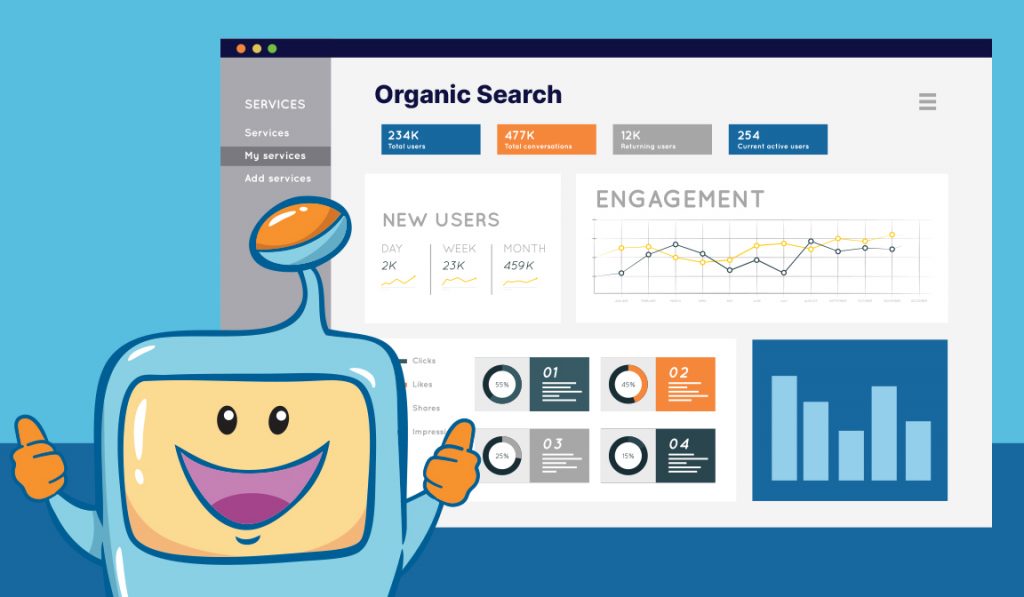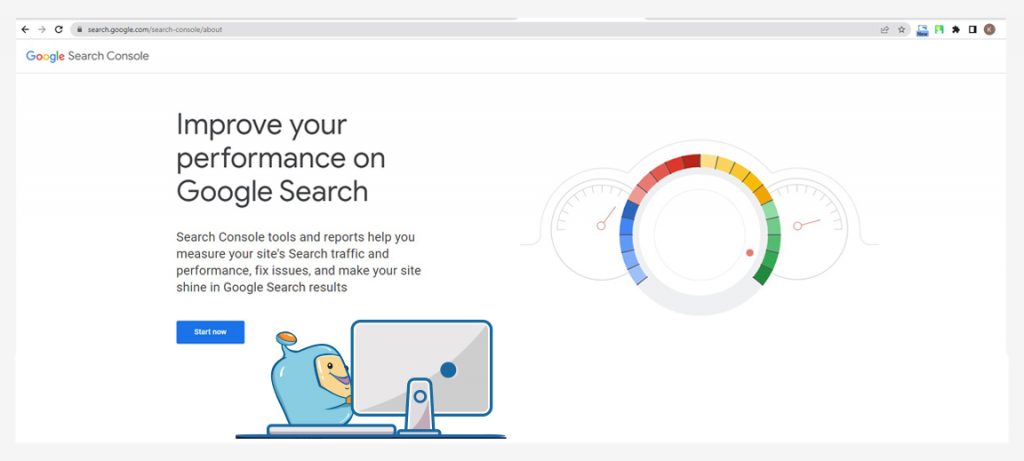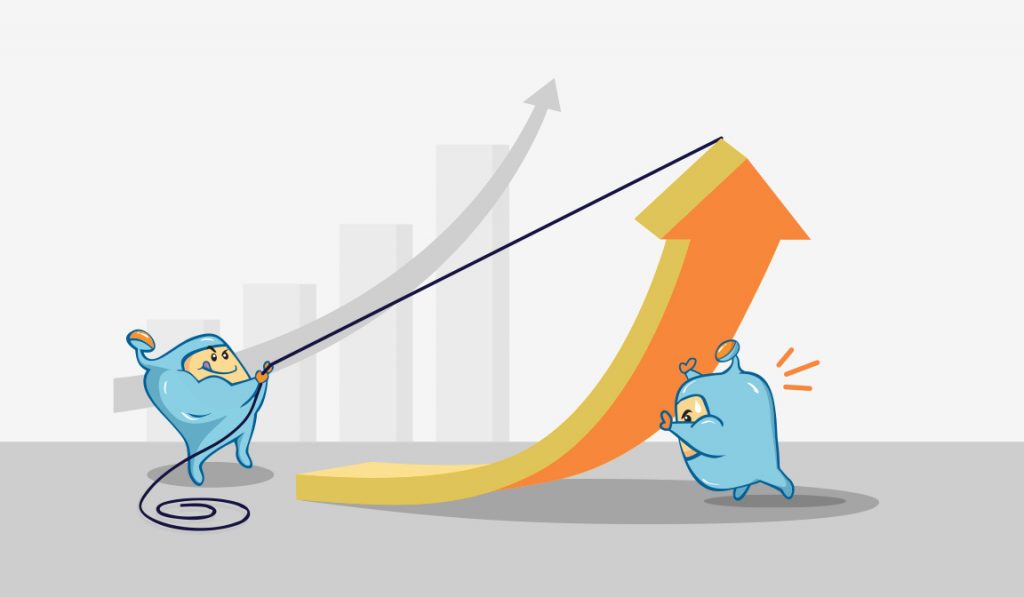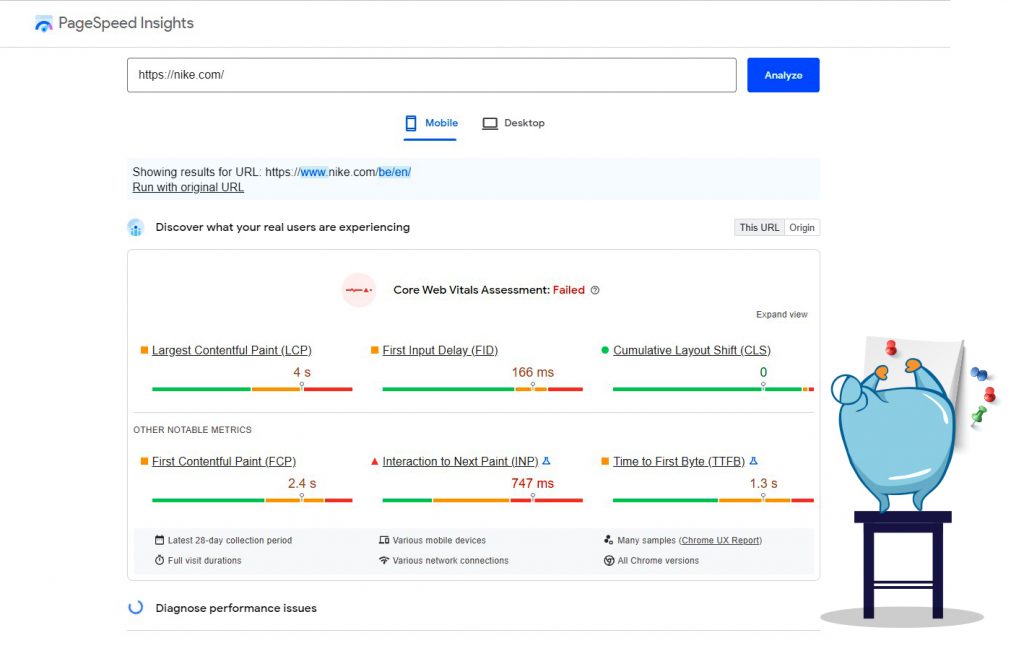
The goal of search engine optimization is to rank high in the search results for your keywords. Google has over 200 ranking factors that they consider when ranking a page. For newbies in SEO, this can seem daunting and can be quite difficult to know where to start. Aside from that, how do you know whether the changes you make has made an impact or not? How do you measure the SEO performance and results of your seo campaigns?
In order to know if your SEO campaigns are working or not, and in order to have a better idea of how to proceed with the optimization of your pages and site, you would need to know how to measure the results of your campaigns.
In this article, we talk all about measuring SEO results. Why is it important to track your SEO results, what particular areas or factors do you need to keep track of, and more importantly, how do you keep track?

Just a recap, search engine optimization (SEO) is the process of optimizing your web pages and content so that they rank high in the search results. You want your content to appear at the top of the search engine results for keywords related to your product or service. As a result, SEO is also known as the practice of attracting quality traffic to your website.
Whether you’re a blogger or a small business owner working on an e-commerce site, having a digital presence is an important part of your inbound marketing strategy. We usually call it digital marketing. As a result, implementing an effective SEO strategy is a good place to start when it comes to increasing your website’s visibility, increasing organic traffic, and attracting new customers.
As I mentioned earlier, there are a lot of factors that Google considers when ranking a page. SEO is a step-by-step process, fixing and changing each particular factor, to make your page favorable to Google and other search engines. In addition, we have no definite data and confirmation what these 200 factors are and sometimes, they also vary depending on the market.
This is where measuring and tracking your SEO results become important. Tracking each change you make on your site, their result and performance, help you determine whether the change you have made is effective or not. This helps you gauge whether your campaigns are a waste of time and effort or if they are indeed working and helping you move up.
Knowing the effectiveness (or not) of your SEO campaigns helps you in moving forward to the next step of your SEO efforts and eventually, get to the coveted top of the SERPs.
Knowing which seo factors and changes generate results also help you come up with a SEO strategy that can be replicated on other pages and sites that you would work on in the future.

If you’ve spent more than five minutes in the SEO world, you’ve most likely heard the adage, “what you measure, you move”. This means that knowing your numbers is the first step in evaluating the performance of your SEO strategy.
As a digital marketer, you can monitor hundreds of metrics for you to evaluate your SEO strategies. However, it is best to start with a few things so that you won’t get caught up with all the information, and end up stuck and unable to move.
So which metrics are important to keep track on a regular basis to know how your seo campaigns are performing?
These are the top metrics that you would need to focus on:
Let’s go into more detail on each of these metrics.

When users enter a question, a word, or a string of words on a search engine, they will see a list of ads and pages related to their search query. Organic traffic is the number of visitors your site receives as a result of people clicking on your pages when they appear in the search engine results page.
And since it is targeted, organic search traffic is what you want for your website. The person is looking for a specific solution and if you can provide it, you will gain a new subscriber or customer. It’s also a good indicator of how far your SEO strategy has progressed. An improvement in organic search traffic indicates that your website’s visibility has increased due to improved keyword ranking.
This is the number one metric to track when it comes to the SEO performance of your campaigns as your goal in SEO is not only to rank up high in the SERPs, but to also get those clicks and traffic to your site.
A way to track your organic traffic is through Google’s Search Console. Add your site in Search Console and you would be able to see metrics for your impressions and clicks for different keywords you are showing up for in the Google search results. Aside from Search Console, another useful tool to keep track of your traffic is Google Analytics. Make sure to use both as they are tools that would provide you valuable insight on your organic traffic and aside from that, they could also provide you hidden opportunities – such as keywords that are bringing in traffic and more keywords to target!
Keyword ranking is the ranking position of your website for your target keywords. Keyword ranking is another important metric to track, aside from your organic traffic. In fact, they go hand in hand as the higher rankings you get for your keywords, the more traffic you also get to your site.
You can also gauge the results of your SEO campaigns based on your keyword rankings. An increase in rank means that whichever changes you have made has a positive impact to your rank.
This is where the importance of making SEO changes to your site one factor at a time, and then tracking how it affects the rank of your site. This helps you determine that that particular factor has a positive or negative effect on your site compared to making multiple changes and not knowing which exactly had a positive or negative effect on your rank.
There are various SEO Tools that you could use to keep track of your keyword rankings such as Ahrefs, SEMrush, Majestic, etc.
Check out our articles on different SEO tools to help you decide which on is the best for you.
We already talked about CTR in another article, but just to have a quick review, the percentage of visitors that see your search engine listing and visit your website after clicking on it is known as the organic click-through rate.
Although it seems straightforward, a lot of website owners fail to optimize for CTR. Although you have no direct control over your website’s traffic or ranking, you may nudge things in the right direction by improving your search engine visibility and increasing the chances that those who see your listing in search will click on your site instead of the other search results.
If you see high numbers in your impressions but low numbers in your CTR, don’t be discouraged; it simply means you need to optimize your meta descriptions, titles, URLs. You can also try to acquire some featured snippets that are relevant to your business.
According to data from firstpage.com, the average clickthrough rate for Google’s first position is 39.6%, the 2nd position is at 18.4%, and the third is at 10.1%. It lowers as the position also lowers. As you can see, there is a big difference between positions 1, 2, and 3. However, most SEOs aim for the top 3 position and then work on creating excellent page titles and meta-descriptions that would get visitors to click on their site. You could be in position 2, even position 3, but if your meta title and description are better than the number 1 or 2, then you can get higher clicks, and in turn, also get to move up higher in rank.
You can monitor your click-through rate in Google Search Console. You’ll see data for “Clicks,” “CTR,” and “Impressions”. Click on the “CTR” box to view a report of your website’s average click-through rate as well as the top-performing pages and keywords.

Search engine visibility is the number of people who see your website in the search results. It’s not as important compared to the other metrics we’ve already discussed however, it can provide you a general view of your SEO progress. A higher search engine visibility may mean that your SEO efforts are working. However, looking at the other metrics would be able to give you a better look at different areas of improvement.
You can check your site’s search engine visibility in tools such as Moz Pro, SEMRush, or SEO Toolkit’s Position Tracking Tool.

Conversion rates is the ratio of conversions (for one specific desired action or goal) to unique visits.
Anything can have a conversion rate, including email signups, purchases, and account creations, depending on the goal you have for your particular site. You may estimate the return on investment (ROI) that your website visitors may provide by knowing your conversion rate.
Setting up custom goals in Google Analytics is one approach to keep track of your conversion rates. With one of their pre-configured templates, you can create goals. From there, you can enter visitor goals like reading an article, watching a video, signing up for emails, taking a course, and any other actions that cause a visitor to convert to a subscriber or buyer.
Are your experiencing an increase in rank and clicks but lower conversion rate? Then perhaps you need to make some changes in your content or check out the keywords that you are ranking for. Check and make sure that you are targeting keywords with your conversion intent and that your content is well suited for your conversion goals.
Bounce rate is the time when searchers “bounce” off or leave your site after viewing a page without continuing to browse through the rest of the content.
Because they think it’s related to website quality, many individuals aim to minimize this measure, but in fact, it actually tells us nothing much about a user’s experience. It could be that the user has already found what he or she is searching for in your content so he or she left the page, satisfied with the answer. It could be that someone looking for the location and contact details of a store already saw it on the page so he or she has bounced off and left.
However, you can track your bounce rate and other metrics such as your time on site and conversion, to see if people are leaving your page unhappy and if it is perhaps time to make some changes on your site – such as checking your page speed, design updates, or making some content fixes.
Check out our bounce rate article for more information on bounce rate, its importance, if having a high bounce rate is a cause for concern, and if it is a ranking factor.
A more authoritative website has a better ability to rank higher for multiple terms compared to a site that has lower authority. A website’s authority score helps identify how well a domain will rank.
Different tools have different ways of assigning and computing authority. SEMrush has its authority score, Majestic has its Trust Flow and Citation Flow, Ahrefs has its Domain Authority and Page Authority. It really depends on your preferred tool but generally, you can use the metrics provided by the tools to gauge how you fare compared to your competitors.
In addition, as you go on with your SEO campaigns, your authority metric should improve over time.
As you progress with your link building campaigns, the number of your site’s backlinks and root domains should also increase, if not, then it could mean that the links are not being read and your link building campaigns may not be working well – check for deindexed links, links going to wrong pages, etc.
The more backlinks a site has and the better quality they are, the better the chances that the site could rank for multiple terms.
Page speed is an important on-page factor that can affect different metrics of your site, more importantly, it affects user experience. Google has also mentioned that page speed is a critical ranking factor when it comes to ranking a site.
A page that loads too slow can cause a user to exit the page instead of waiting for it to load and in turn, Google reads this as a bad user experience.
Page speed affects your conversion and bounce rates in addition to being a ranking element for your website.
Who would want to wait for 5 minutes just to get into the website, right?
To determine whether your website is quick, run it using Google’s PageSpeed Insights tool. One hundred percent is a quick score. It’s deemed good to receive a score of 90 or above but less than 100. If your score was between 50 and 90, it needs to be raised. A score of 50% or less is regarded as poor.

Check out our Page Speed article for more details on page speed, if it is indeed a ranking factor, and tips on how to improve the page speed of your site.
How long did visitors stay on your page?
There is a limited probability that a 2,000-word blog article will be read if readers are only spending 10 seconds on it on average.
Even so, it’s not always a bad thing if a URL has a short time on the page. Think about the page’s purpose. The average time spent on “Contact Us” pages, for instance, is typically minimal.
It takes time to implement an SEO strategy that will improve your website’s exposure and ranking on Google. As mentioned earlier, there are over 200 ranking factors that Google considers and to better gauge the performance of your campaigns, it is better to make one change at a time and track the result for each change. Start with on-page SEO changes, then work towards off-page SEO changes.
In addition, the competitiveness of your niche and target keywords should also be considered. The more difficult a keyword is, the longer it would take to rank, which is why it is best to work with low and mid competition keywords to start.
It may take months to years to see considerable SEO results. It also takes consistency. Just because you are already ranking well, it does not mean that you will stop working. Remember, your competitors are also doing SEO and if you do not keep your efforts consistent, your competitors are bound to snatch up your position. Also, SEO is a moving target and Google often makes algorithmic changes. What is working one moment, may not be the next.
Nevertheless, great, valuable content, good user experience, and increasing your site authority through links will always be main ranking factors that would never change and which you should be aiming for.
Evaluating the performance of your campaigns based on the different metrics mentioned above would help you determine whether your campaigns and changes are working or not. Being able to determine the SEO performance of your campaigns help you in determining which factors are positive factors, which ones are a waste of time, and which can cause negative effects. Overtime, this will help you come up with a SEO campaign that works instead of wasting time on factors that do not work.
Over 200 ranking factors and have no idea how to get started and which factors work? Check out SEOIntel.com for tested ranking factors, so you do not have to waste your time testing and checking which factors work and which ones do not.